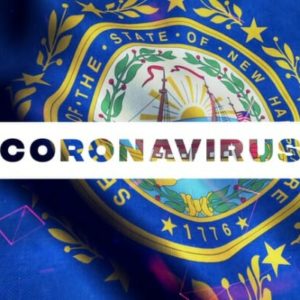Like many of us, scientists often leave stuff at the back of the freezer. However, sometimes the scientists’ stuff is a way to look into the past. Recently scientists in Italy and the US were able to look at when COVID-19 became widespread in both countries.
The US scientists were able to take samples of frozen blood that were donated during December 2019 and up until January 17th of 2020. They found that more than 1 percent of the samples had antibodies to COVID. The only reasonable conclusion is that the virus was widespread in the US before the first official case on January 19th, 2020. The samples came from nine states, including Massachusetts, and samples from every state tested had antibodies. What are the chances that Covid19 was present in Massachusetts and not New Hampshire?
The Italian scientists were doing a study on lung cancer, and collected nearly 1,000 blood samples from September 2019 until March 2020. They found that 14 percent of the samples from September 2019 and 16 percent from October 2019 had antibodies to COVID-19. With those percentages, what are the chances the virus wasn’t present everywhere that jets can fly by late 2019? Bear in mind that the US and Italian samples were from asymptomatic people who had previously had the disease and developed antibodies to it, all before the world even knew there was a disease.
So what does this mean to us here in New Hampshire? What it means is there are likely a lot of people walking around who are immune. You may or may not be one of them. No one knows whether 10 percent or 90 percent of the population is immune. What that percentage may be in New Hampshire should be the most important factor in public health decisions. If it’s on the low end, we need to be very careful. If immunity is on the high end, we just have to worry about protecting the most vulnerable people, and there’s no justification for draconian restrictions on everyone’s freedom.
Why aren’t public health officials looking at immunity levels in New Hampshire? Maybe someone is, but they haven’t published anything yet. If no one is looking, maybe we should get started ASAP.
Then again, perhaps it’s not that simple. Just looking at antibody tests doesn’t show the whole picture. Antibodies only last for a while, and not everyone who has COVID develops antibodies. Some people develop at least one other form of immunity (T cell immunity), which is harder to test. The good news is that kind of immunity lasts for a long time.
In 2003, SARS1 came out of another bat cave in China. The world got lucky and stopped SARS1 before it could become a pandemic. In Singapore, they found 23 people who had survived SARS1. They were able to test their blood against COVID-19. What they found was: “robust cross-reactivity to the N protein of SARS-CoV-2 (another term for COVID-19)”. That shows that SARS1 and COVID=19 are close relatives. It also is likely that for most people immunity to COVID will last for a long time, so we aren’t likely to see another coronavirus pandemic from China in our lifetimes.
If our scientists can do the same kind of testing the scientists in Singapore did, we can measure immunity in volunteers presently. If there are enough frozen blood samples, we could also see how it spread in New Hampshire over time. If there are samples from late 2019, we can look through the time machine to see whether it was us back then.
Without this science, the “experts” are flying blind.
John Lewicke is a Republican state representative from Mason.




